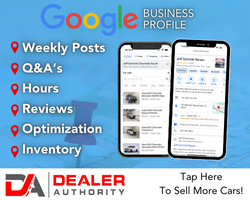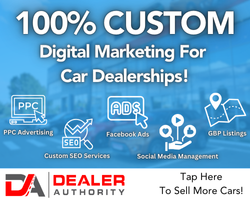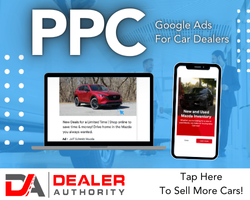This is part 1 in a 4 part series about automotive social media strategies that are emerging to help car dealers get true benefit. It’s not just about branding. It’s not about auto-feeding marketing content. With the right strategies in a place, dealers can drive foot traffic and website visitors in a way that can help them sell more vehicles and drive more service customers.
Understanding the Three Stages of Your Dealership’s Social Media Presence
Arguably the most important lesson I’ve learned in the 9 months that I’ve been analyzing car dealers’ social media profiles and pages is that there’s no formula that can be applied to them universally. There’s a plan that can be applied, but every dealer has unique strengths and weaknesses within their presence that requires adjustments in direction to get them onto the right strategic track.
Some have a strong presence that allows them to integrate directly into an aggressive strategy starting immediately. Others have to work the EdgeRank algorithm for a little while before they can successfully post aggressive content like inventory items. There are those who were so butchered over the years that it’s better to start from scratch rather than try to fix their existing presence, particularly on Facebook. Thankfully, the majority of dealers are in a neutral state – not bad, not good, ready to get going.
Though the strategy itself cannot be applied universally, it doesn’t take long to determine the health of their social media presence and place them into the right stage. Think of it like gears on a manual transmission. If the page is going nowhere, you have to get going in 1st gear. If you have a good rolling start, we can pop it into second gear and accelerate quickly. Those who have their presence in a strong state already have some velocity – it’s time to kick into 3rd gear and beyond.
Stage 1: Localizing Fans
Dealers that have fewer than 500 fans or that have more than 500 with a good percentage that are localized are ready to get started with Stage 1. This is the starting point and lays the foundation for the aggressive strategy. There was a time when it was perceived that having bulk fans regardless of where they lived was a good thing. The idea was to play the numbers – if you could get 10,000 fans or more, surely some of them will be in the local area, right? Unfortunately, this strategy isn’t just ineffective. It can actually hurt the ability of your posts to appear in the important news feeds on Facebook, namely those people within driving distance.
On the other important networks (Twitter, Google+, and Pinterest), localization isn’t nearly as important. Sure, you want to have locals following you, but you’re not harmed by having people from across the country or around the world also following you. On Facebook, it’s a different story. With reach being the most important component of a valid Facebook strategy, having a high percentage of distant fans can prevent your posts from reaching the true target market. I’ll go into more details about why this is the case when we get into Stage 2, but for now it’s important to know that Stage 1 is all about making 80% of your Facebook fans localized within driving distance to the dealership.
This is why it’s easier to start with fewer fans than with a lot. One of the most successful pages that I’ve seen so far is one that had 26 fans in February. As of July, they have over 1,800 likes with 86% of them being from the local area. Keep this in mind when you look at your own numbers. No need to get discouraged if you have 300 fans. As counter-intuitive as it may sound, you’re actually in much better shape than those who have 30,000.
If you fell victim to a poor strategy in the past that acquired fans through nefarious means such as games, giveaways, or direct purchases, it’s quite possible that you may have to start over. It’s a hard choice to make, but Facebook does not offer an easy way to purge fans if you have thousands of low-quality ones. More importantly, your EdgeRank is potentially shot, in which case you’ll get more traction by starting from scratch. Before anyone makes this sort of decision, please contact me directly. I’ll take a look and make a recommendation.
Whether you’re building on a page that hasn’t been damaged or one that you are starting fresh, the strategy for fan acquisition is the same. Locally-targeted transparent ads are the way to go. It’s not expensive if managed properly and is the best way to get the right people following your page. The ads need to be authentic. Don’t try to coax people into liking you page. The ad copy should be something to the effect of, “Hey Baltimore! ABC Motors wants to be your automotive resource on Facebook.”
Had you asked me a year ago if it would work, I would have said it was unlikely that you can get enough people to like a dealer’s Facebook page using this method. Thankfully, smarter people than me told me to try it and the results have been nothing short of spectacular.
While the page is growing through Stage 1, the posts should be indicative of what you’ll be posting in the future, just not as great. In other words, save your best content for when you’ve got a good number of people engaging with your standard posts.
Once you get to a nice point where the majority of your fans are fresh, local, and ready to move on to the next stage.
Stage 2: Get the Followers and the Algorithms to Like You
There are two algorithms and two timelines that you’re going to want to play at here. The algorithms are the Facebook EdgeRank algorithm and the Google+ variation, an unnamed but similar algorithm. Both determine whether or not your posts will appear in the various news feeds of your fans as well as their connections. Twitter and Pinterest are chronological feeds, but on Twitter you have the potential to get highlighted through lists and 3rd party applications that can aid in increasing exposure.
The majority of effort should focus on Facebook. It’s the big dog, the network that has the highest potential for reaching your audience. That doesn’t mean that you can forget the others. At the bare minimum, you should take the few minutes per day it takes to craft strong content to all three of the lesser social networks. This doesn’t mean plugging in a feed, especially the common practice of having your Facebook posts feed directly into Twitter. It takes a tiny amount of time to craft and post on the other networks. Make it a habit to do it first thing in the morning, before lunch, or even before leaving for the day. They’re just too easy to ignore and they have a value that we’ll discuss in a future post.
As for Facebook, Stage 2 is often the hardest. It’s not like Stage 1 where you can just throw ads at it to make it work. You have to craft strong content, mix it up, and get people to interact with your posts. There may be an urge to use the Boost option (paying to increase exposure of individual posts) on a lot of your posts, but there’s a caveat that everyone must understand. Facebook ads aren’t like Google ads. On Facebook, the effects swing both ways. If you boost the wrong type of content, you can actually harm your EdgeRank. I’ve seen first hand where a page had boosted so much spammy content in a month that Boosting became cost prohibitive.
The urge to Boost a lot of posts can be strong, especially after you’ve had one reach tens of thousands of people. The challenge is that if the content that is boosted is received negatively by the community, your potential reach per Boost goes down. Being “received negatively” isn’t just those people who click ‘hide’ or ‘report’ on your content. Facebook and Google+ are both aware of inaction as well. In other words, if someone sees your posts in their feed and they do nothing with it as they scroll passed it, this counts negatively towards your EdgeRank with that individual. If too many people are ignoring your posts, it will become less visible as will future posts. This is the reason for what I mentioned earlier about how low-quality fans can hurt your exposure to your target audience. It’s not just about getting in front of people. It’s about getting them to interact with you.
The most important part of Stage 2 is the content mix. As I’ve said many times in the past, cat pictures and memes do not belong on a dealer’s Facebook page. Yes, they can be popular. However, the goal isn’t to try to fit in on Facebook. The goal is to stand out. You should have made a promise in Stage 1 that you’re going to be your local community’s automotive resource on Facebook. You need to fulfill that promise with the content.
There are dozens of types of quality, relevant content that you can post. Pictures of cars, maintenance tips, local community spotlight posts, and interesting automotive facts are just a handful, but if you mix these in at a rate of around 1-3 posts per day, you’ll find it to be the fastest path to get to Stage 3 with or without spending money on Boosts. Once you’ve made it to where your posts are all getting likes, comments, or shares at an acceptable level, it’s time to get to the money posts in the next stage…
Stage 3: Driving Business
When your page is rocking and rolling with localized engagement, it’s time to get to the goal of your social media presence: selling more cars and driving more service customers. For this, you’ll have to stay tuned for part 2 of this 4 part series. Until then, get your social media house in order by moving forward with Stage 1 and 2. If you have any questions, feel free to leave a comment here or contact me directly.







